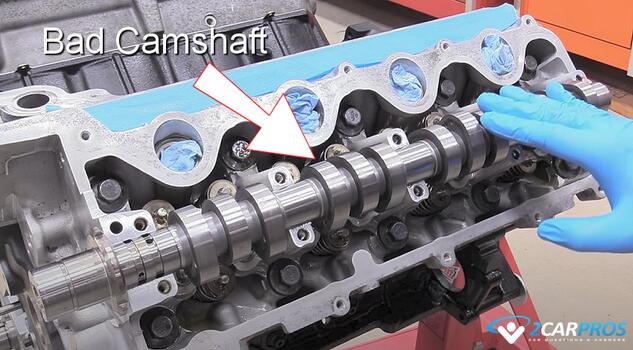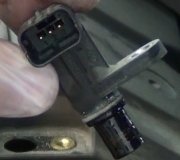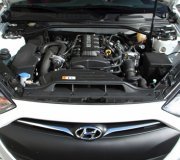Introduction
An automotive engine camshaft plays a vital role in the operation of an internal combustion engine by controlling the timing of intake and exhaust valve operation inside the cylinder head. When a camshaft begins to fail, it can cause engine performance problems ranging from engine power loss to severe mechanical damage. In this guide we will go over the symptoms you will notice when the camshaft inside your engine starts to go bad and how to diagnose it.
Symptoms of a Bad Camshaft
1. Engine Ticking or Tapping Sounds: By far the easiest way to tell if the camshaft is going bad is engine tapping or ticking sounds which increase in frequency as engine RPMs rise and is due to the extended clearance between the camshaft lobe on the rocker arm, or roller follower. Because the camshaft lobes are responsible for opening the intake and exhaust valves they can wear down, (lose metal). This is why it is important to find this problem early and before this rouge metal destroys the internal workings of your engine.
2. Check Engine Warning Light: The computer in your car is designed to detect anomalies in the performance of each cylinder so when the rocker are or camshaft followers do not open a intake or exhaust valve fully the computer will detect a misfire for that cylinder, Use a scanner which will give you a code that can tell you which cylinder the camshaft is having an issue on. Misfire codes like P0300 (random misfire) or specific cylinder misfire codes (e.g., P0301 for cylinder 1) could indicate camshaft issues.
3. Backfire Through Intake Manifold: While under load, the engine will backfire through the intake manifold due to the trapped combustion event, which is then released into the intake manifold, where it ignites the intake fuel air mixture charge creating the aforementioned backfire.
4. Phantom Camshaft Position Sensor Failure: A severally worn camshaft can cause inconsistent camshaft rotations, triggering diagnostic trouble codes like P0340 or P0341, which refer to camshaft position sensor circuit malfunctions. A scanner can be used to read the waveforms of the camshaft rotations where the inconsistencies can be detected.
5. Metal in Engine Oil: When you check your engine oil and notice metal sparkles, this can be sign the engine camshaft is going flat. This metal is a by product of a combination of the destruction of the camshaft lobe and the lifters or roller followers.
6. Cylinders Misfires: If a camshaft breaks, some cylinders will be affected but not others, for example: If the last two cylinders have no compression you may suspect a broken camshaft due the non operation of the valvetrain, this is not a common occurrence but it does happen.
Conclusion
A bad camshaft can cause a variety of symptoms, ranging from misfires and poor fuel economy to engine noise and reduced performance. By understanding these symptoms and performing the necessary diagnostic steps, you can identify camshaft problems early and take action before more serious engine damage occurs.
Watch the Video!
Please watch this video of the job being done to glean additional helpful information.
Credits
This guide knowledge base was created by the 2CarPros Team, and by Ken Lavacot: Automobile repair shop owner and certified master automobile technician of over 30 years. If you have question or need help please ask one of our experts we are happy to help. Please visit our 2CarPros YouTube Channel for additional car repairs.




